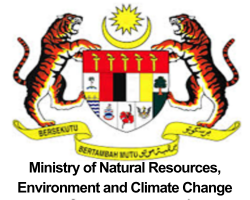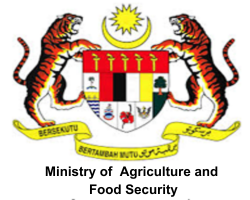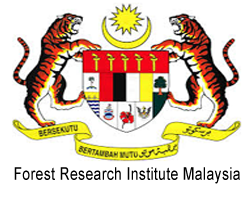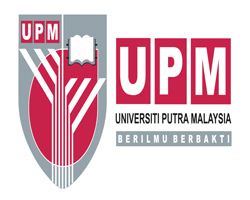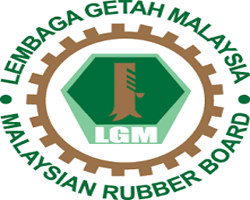unknown, . (2009) Ecosystem carbon dynamics in logged forest of Malaysian Borneo. [Research Paper]
|
Text
Ecosystem Carbon Dynamics in Logged Forest of Malaysian Borneo_Saner et al 2009.pdf Restricted to Repository staff only Download (6MB) |
Abstract
The tropical rainforest of Borneo is heavily disturbed by logging, to date less than half of the original forest cover remains. To counteract such development logged forest is rehabilitated to regenerate its natural protective function. In this thesis we consider the carbon budget of logged forest and the ecology of the trees that are planted for rehabilitation. We show that the logged forest under study differs from unlogged forest due to the lack of the dominant trees and hence the organic carbon that is stored in their biomass. Besides this difference our results indicate that logged forest can maintain its protective function for carbon storage and is therefore worth preserving. The dominant trees, known as dipterocarps, belong to the Dipterocarpaceae family and are keystone species of the lowland forests of Borneo. On the basis of experimental work we study the carbon dynamics of selected dipterocarp species at the seedling stage. With plant physiological measurements of the carbohydrate stores we demonstrate how seedlings adapt to a changing light environment. Our results show that photosynthates are invested into growth or carbohydrate reserves, irrespective of the tree species under study. Further, experimental evidence suggests that the ectomycorrhizal association (plant-fungi-symbiosis) is crucial for the growth of seedlings and should therefore be considered for forest rehabilitation measures. In contrast we could not find evidence for a complex ectomycorrhiza-network between dipterocarp trees and seedlings in logged forest. In Chapter 1 we describe the study area in the logged forest with regard to environmental factors that are relevant for forest rehabilitation. We address the intensity of previous forest exploitation, age and composition of the existing forest stand, soil specification and climatic conditions. This is the first comprehensive description of the logged forest of the Sabah Biodiversity Experiment, a large scale forest rehabilitation project in North-East Borneo. In Chapter 2 we present a carbon balance for the logged forest of the Sabah Biodiversity Experiment. We quantify the six main carbon sinks: above-ground tree biomass, above-ground non tree biomass,below-ground root biomass, litter, dead wood and soil. In particular the above-ground tree biomass is an important carbon sink. In comparison to unlogged forest the bound tree carbon in logged forest is lower. This can be explained with the lack of big trees (>90 cm diameter at breast height) of the Dipterocarpaceae family. Based on these results we conclude that forest rehabilitation measures are essential to regain the carbon sink potential of the tree biomass in logged forest. In addition we compare tree diversity in logged forest compared to pristine forest and find that the level of diversity (Fisher’s α) is similar higher in logged forest. Once we consider tree species composition in logged forest, we find that the forest stand is defined as heavily degraded secondary forest. In contrast the quantity in standing dead wood, fine root biomass and litterfall rates, which all represent indicators for nutrient- and carbon dynamics, indicate a less degraded system. All three indicators are similar in logged and unlogged forest, suggesting that a logged forest can fully maintain these ecosystem processes. In Chapter 3 we study to what extend forest stand structure and composition alters the soil respiration rate. Soil respiration is one of the most relevant quantities to be measured in a carbon budget. It represents the direct exchange of carbon dioxide (CO2 ) between the forest floor and the atmosphere. Our results illustrate that soil respiration rates are significantly lower in forest canopy gaps, but do not change between different forest stands.We identify a higher soil temperature and a lower litterfall input as the driving factors. Our results show that soil respiration rates during the night decrease by about one fifth compared to day rates. Despite the fact that our results indicate a major contribution of root respiration to total soil respiration, we could not find a direct relationship between stand diameter and soil respiration rate. In Chapter 4 we consider the carbon balance on the level of individual trees. In a shadehouse experiment we test for the importance of changing light environments on the growth and carbohydrate storage of dipterocarp seedlings. It is generally known that seedlings grown in the understorey of a tropical forest are light limited. An overthrown tree or a broken off branch can result in a canopy gap and increased light conditions that allow a seedling to grow. As the competition between seedlings is high, we expect that they pursue different survival strategies. We simulate the creation and closure of canopy gaps to test, whether seedlings that experience a sudden light change will invest photosynthates into instant growth or into stores for later survival. In five out of six species we find that an increased growth is negatively correlated with the amount of stored carbohydrates. In addition we identify a yet unknown component of carbohydrate stores in dipterocarp trees. Iditol–a sugar alcohol–contributes up to half of the stored carbohydrates, depending on species and the light environment under study. In Chapter 5 we study the influence of light, nutrients and ectomycorrhiza (plant-fungi-symbiosis) on the growth of Vatica albramis (Dipterocarpaceae) seedlings. We hypothesise that it is more advantageous to plants to trade carbon for nutrients with ectomycorrhiza under low light than hight light. We test this by relating the ectomycorrhizal benefit to the plant with an increase in relative mass growth, where we expect that the growth is higher when light conditions and carbohydrate supply is higher. In forest rehabilitation projects seedlings are raised in the nursery before they are outplanted. The soil used to raise the seedlings is typically excavated forest subsoil that is dried for one week prior to shredding. We expect that soil drying lowers the naturally occuring hyphae and spores of ectomycorrhiza which may negatively affect plant growth. We treat soil in our experiments with the same method of soil solarization and show that reducing the ectomycorrhiza symbionts can reduce seedling growth for up to one year. In Chapter 6 we use the existing logged forest of the Sabah Biodiversity Experiment and the remaining adult Dipterocarpaceae of the area. Seedlings of Dryobalanops lanceolata and Shorea parvifolia are planted under an adult tree of the same and of the other species. We expect that an ectomycorrhizal network may support seedlings that grow under sub-optimal light conditions, as they may receive carbohydrates from the adult dipterocarp tree. Our results cannot support this assumption. Seedlings of both species grow better in close proximity to adult Dryobalanops lanceolata trees, however this effect is not related to an ectomycorrhizal network. It is possible that Dryobalanops lanceolata trees appear in locations that are beneficial to the growth of seedlings, or that carbohydrates of the adult trees of this species are present at higher concentrations in the surrounding soil and are absorbed by the seedlings outside the proposed hyphal network. In the General Discussion we present a carbon budget for the reported values of chapter 2 and 3. This can be used as a foundation for future measurements of logged forest productivity of the Sabah Biodiversity Experiment. We understand productivity as an increase in biomass over time, which can be related to an increase in stored organic carbon. The productivity of the forest is not directly determined here, however we recognize that this should be part of future research activity in this area. For chapter 4, 5 and 6 we put our results into context with current theories of tree guild coexistence in tropical forests. We understand a guild as a group of dipterocarp species which adapt their growth to changes in the light conditions and ectomycorrhizal infection in similar ways. We conclude that the experimental work presented here advances our knowledge on potential niche axes of selected dipterocarp species which is needed to test whether random (neutral) processes can explain tree species diversity in tropical forests.
| Item Type: | Research Paper |
|---|---|
| Creators: | unknown, . |
| Title: | Ecosystem carbon dynamics in logged forest of Malaysian Borneo |
| Date: | 2009 |
| Location: | Sabah Forestry Department website |
| Publication: | Sabah Forestry Department |
| Physical Description: | 215p. |
| Agency Name: | Universiti Putra Malaysia (UPM) |
| Date Deposited: | 17 Oct 2018 01:02 |
| Last Modified: | 17 Oct 2018 01:02 |
| URI: | http://myagric.upm.edu.my/id/eprint/12881 |
Actions (login required)
 |
View Item |

